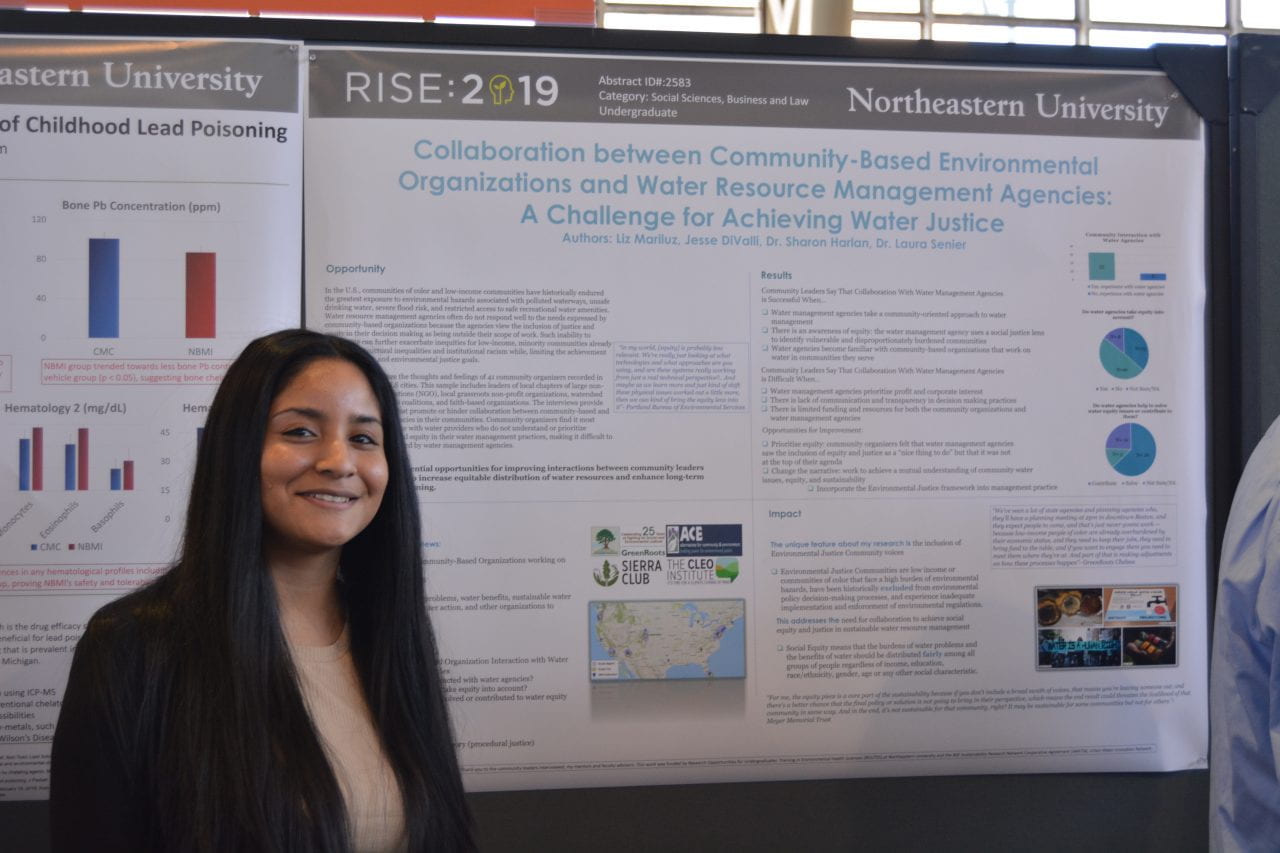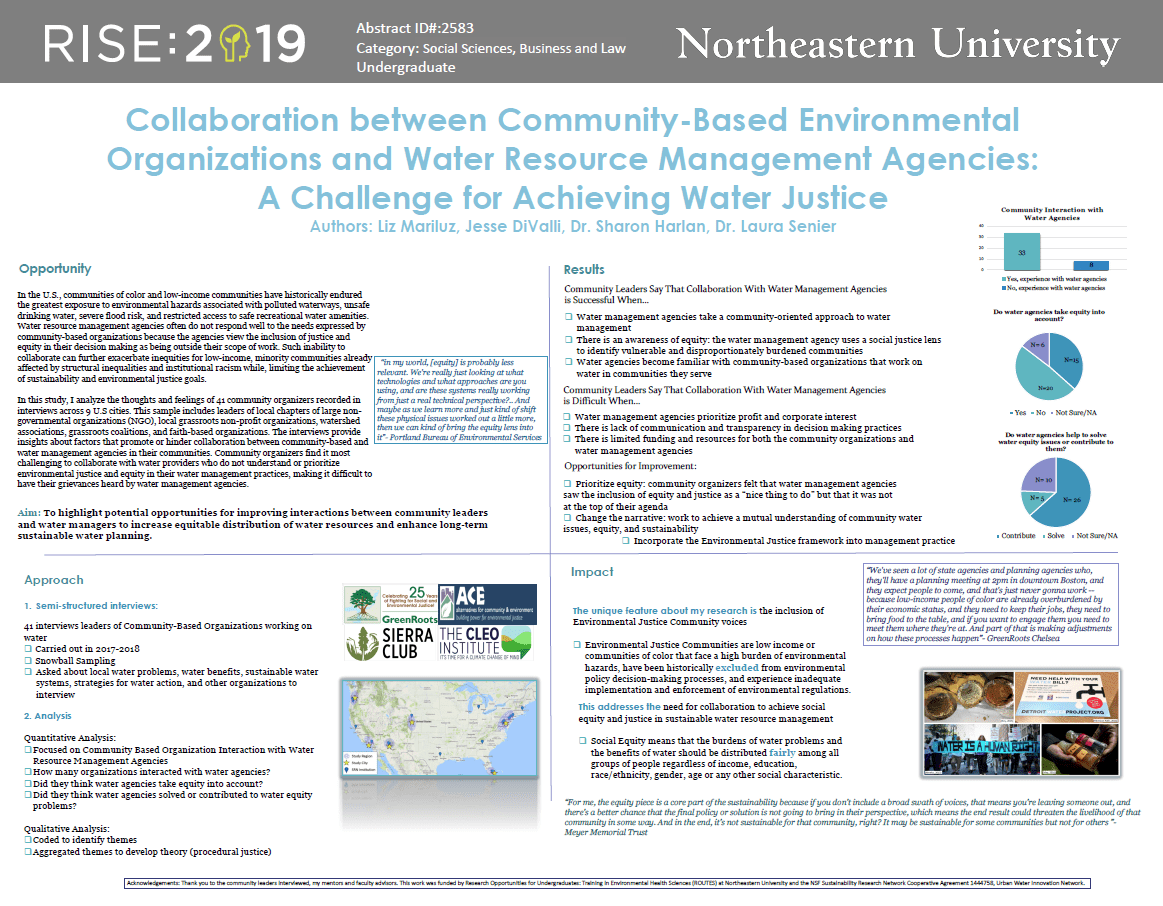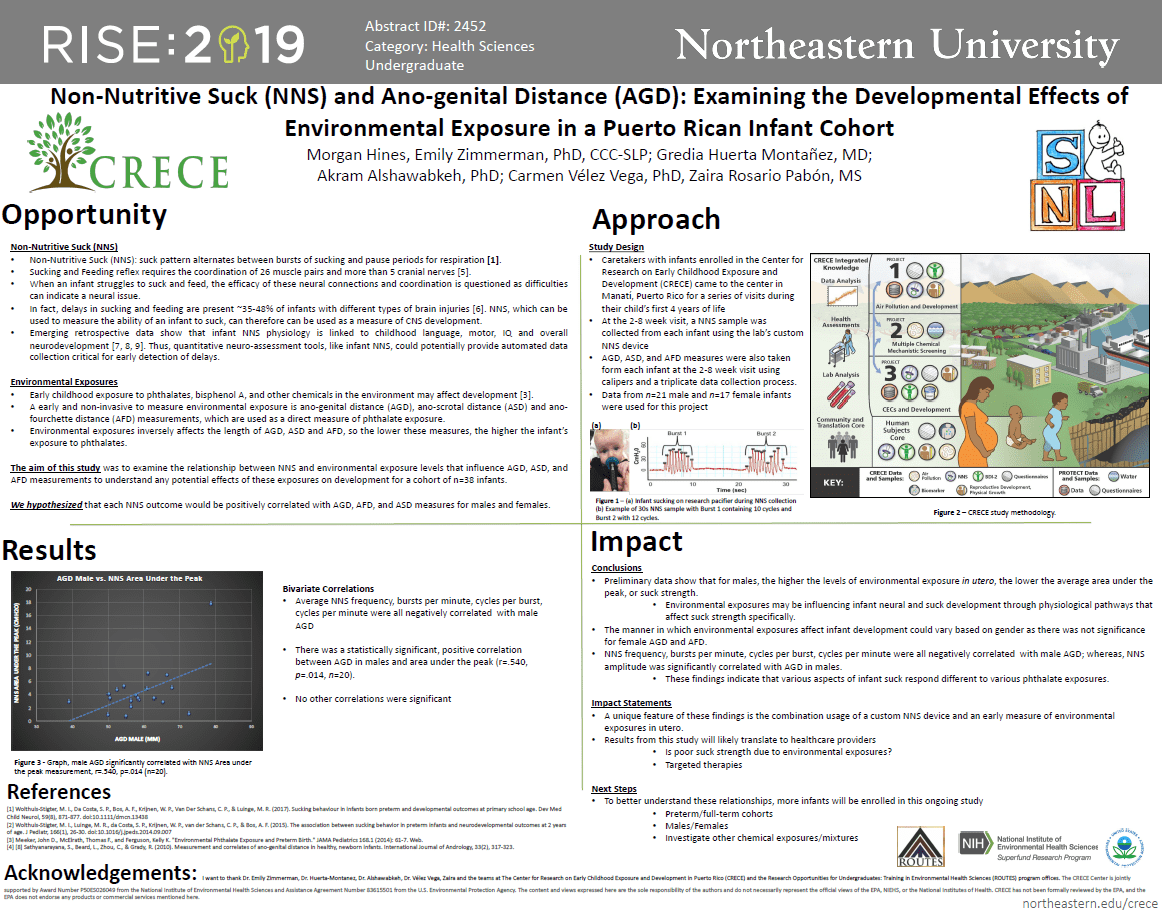On April 4th, current and past ROUTES Scholar’s presented their research via posters at Northeastern University’s Research, Innovation and Scholarship Expo (RISE: 2019). Every year RISE brings together over 2000 “industry leaders, entrepreneurs, investors, researchers, and technology enthusiasts from diverse sectors [which] engage more than 400 of Northeastern’s solution-focused innovations.” As a convergence of industry, capital, and academia, RISE creates a dynamic feedback loop translating into game-changing technological advancement, lucrative commercial pathways, and pioneering joint research projects and is the largest event of its kind in the United States. [1]

This year, present scholars Liz Mariluz and Kiara Masaoy and past scholar Morgan Hines attended the event and presented posters on their respective research projects.
Kiara Masaoy is a current ROUTES Scholar working in Dr. Penny Beuning’s lab continuing the work of previous Scholars in the process of engineering Taq alpha DNA polymerase to copy damaged DNA specifically with high fidelity and efficiency. Her poster titled, “Engineering a High Fidelity and Damage Tolerant DNA Polymerase,” focuses on the criminal justice systems’ heavy reliance on forensic DNA analysis to identify the perpetrator of a crime. To increase the copy number of a DNA sequence found at a crime scene, the initial step in the analysis is DNA amplification through polymerase chain reaction (PCR). While the replicative polymerase used in this reaction amplifies DNA with high fidelity, it may be unable to bypass endogenous and exogenous damage to DNA. DNA polymerases capable of copying these lesions, translesion synthesis (TLS) polymerases, could be used but unfortunately, this comes at the cost of lower fidelity during amplification. Therefore, the aim of this project is to engineer a Taq Pol III alpha DNA polymerase hybrid that combines the best attributes of replicative and TLS polymerases–high fidelity and damage tolerance, respectively.

Liz Mariluz is another current ROUTES Scholar working in Dr. Sharon Harlan and Dr. Laura Senior’s lab focusing on environmental health and justice research. Through their projects, Liz has been analyzing qualitative data on how organizations collaborate over environmental justice issues in their communities and how access to green and blue space affects the mental health and well-being of inner-city youth. For her RISE poster titled, “Collaboration between Community-Based Environmental Organizations and Water Resource Management Agencies: A Challenge for Achieving Water Justice,” she presented on collaboration experiences between environmental justice groups and their local water agencies. This project focused on the need to address the issue of water inequity in disadvantaged communities.

One of our previous ROUTES Scholars, Morgan Hines, still participates in research in Dr. Emily Zimmerman’s Lab and presented a project funded by a Summer Scholars Independent Research Fellowship (SSIRF) that examined the relationship between infant neurodevelopment and environmental exposures. Her poster titled, “Non-Nutritive Suck (NNS) and Ano-gential Distance (AGD): Examining the Developmental Effects of Environmental Exposure in a Puerto Rico Infant Cohort,” examines this relationship, by focusing the study on comparing infant samples of Non-Nutritive Sucking (NNS), a novel neurodevelopmental evaluation tool, and anogenital distance (AGD), a measure inversely related to environmental exposure levels in infants.
Congratulations to our present Scholars for successfully presenting their first posters ever during this prestigious event. One of the goals of the ROUTES program is to provide Scholars with multiple opportunities to present their research to the community. Visit our News page to find out more about other conferences the ROUTES Scholars have attended.
[1] https://www.northeastern.edu/rise/about/
Kiara Masaoy
Liz Mariluz
Morgan Hines



